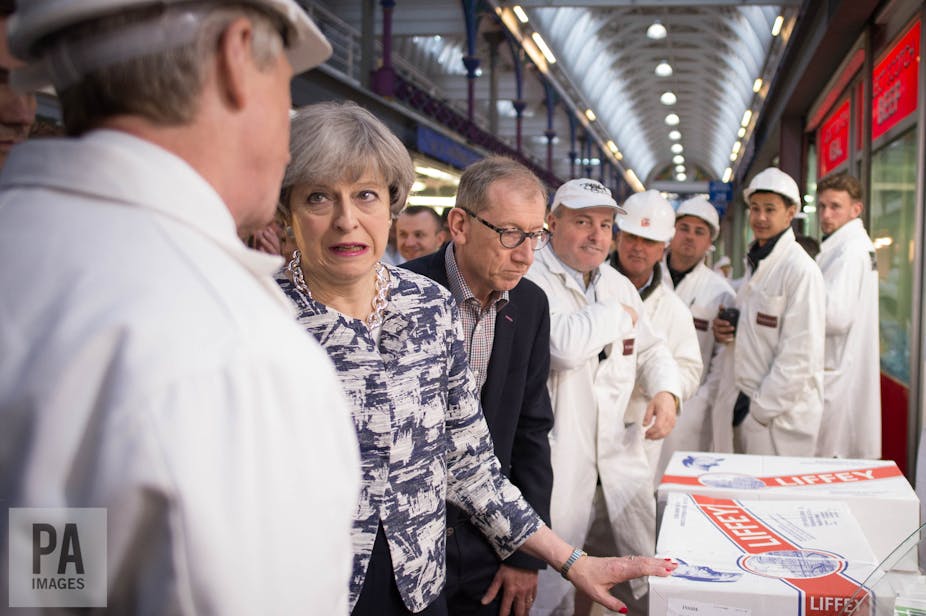Political parties in the UK are currently entirely absorbed in one topic alone: Brexit. But there is something else that should be up for discussion. Something arguably far more important, and which concerns sociopolitical change and the future of party politics. It’s the increasing evidence of a “two-tribes” phenomenon or a new axis in British politics. The parties must somehow get to grips with this change if they are to form a governing platform.
Politically, the United Kingdom – or more specifically England – appears defined by a new core axis that no longer revolves around class. It’s defined by place-based and educational characteristics. The traditional “left versus right” axis has been replaced by a more complex focus on “open versus closed” models of society. In making this argument I am indebted to the research of Will Jennings and Gerry Stoker and the recent writing of journalist David Goodhart and playwright David Edgar.
On one side of the divide, we find the “cosmopolitan” or “anywhere” sections of society. This group tends to be diverse, positive, educated, younger, liberal, mobile and urban based. They are the “winners” of globalisation. On the other, are the “backwater” or “somewhere” communities. They tend to be white, economically precarious, older, less educated and nostalgic. They are the losers in a hyper-fluid, globalised world.
When Scottish Conservative leader Ruth Davidson called for the “rebooting of capitalism” in July it was to these “somewhere” communities that she sought to draw attention. Pit villages without pits, fishing ports without fish, steel cities without steel, railway towns without railways, seaside piers without tourists – to paraphrase her argument. Many within the Conservative party recoiled at the obvious sentiments of a lefty within the nest but in reality Davidson was encapsulating the manner in which representative politics seems to have turned itself inside-out and upside-down.
Indeed, a critical element of the 2017 general election needs to be underlined in the minds of every politician and each of their advisers. The Labour party is now positioned very much as the party of the more cosmopolitan, wealthy and diverse “anywheres”. The Conservative party, meanwhile, has emerged with much closer links to those most economically vulnerable or politically disengaged within society. It is only slightly over-simplifying to suggest that the main political parties have to some extent switched around their core constituencies.
The new arrangement is likely to frustrate the centre left more than the centre right. That’s because the cosmopolitan “anywheres” are thought to form around a quarter of the electorate. The “somewheres”, on the other hand, form around 50%. What Goodhart calls “the inbetweeners” make up the final floating 25%.
This matters because the demands placed upon political parties by citizens in cosmopolitan and non-cosmopolitan areas are likely to be very different, almost to the extent of being diametrically opposed. Political parties seeking to secure a governing majority will somehow have to bridge both worlds, both tribes, both cultural blocs.
Both parties will have to offer a broader political bandwidth in order to straddle these increasingly divided polarities.
Adjusting the bandwidth
The challenge for the right is that its support is precariously dependent on the parallel lives of traditional shire Tories (old, wealthy, educated) and the vast swathes of the white working classes (the “left behind”). These could be seen as two clear sub-tribes within the party but they are at least bound together by a shared socially conservative and communitarian sense of cultural loss (and together they also form the larger part of the electorate).
The political risk for the (next) leader of the Conservative party is analogous to the physical risk of trying to ride two horses at the same time: it’s fine as long as the horses stick closely together but as soon as they veer off in different directions, it becomes very painful.
Meanwhile, Labour currently lacks the political bandwidth to win a governing majority. It’s true that Jeremy Corbyn has succeeded in mobilising young, educated voters and cultivating energy, passion and belief on the left of the political spectrum. A strong foundation has undoubtedly been established and can now be built upon. But the political bandwidth offered by Labour will have to move to embrace traditional sections of the centre left – less Glastonbury glitz and more north-eastern grit.

Labour has formed an exclusive tribe that too often appears to look down upon, and possibly even marginalises, traditional Labour voters. This is due to a failure to understand the existence of broad cultural anxieties and sentiments of psychological loss. It’s this exclusivity that helps explain the rise of UKIP and that resonates with Goodhart’s criticisms of the Labour party’s intolerance of anyone who dares challenge a cosy, tolerant, multicultural view of the world. This is exactly the “floppy left” argument that cost Sarah Champion – undoubtedly one of the most talented and committed MPs of her generation – her role in the shadow cabinet.
Labour’s bandwidth is too tight, leaving the party too afraid of tackling major social issues head on – dare I say too elitist to close the gap that appears to have emerged between the governors and the governed.
The challenge is to resist the temptations of shallow populism. The parties must instead take the more difficult path, seeking to redefine, reinvigorate and most of all re-imagine the theory and practice of democratic politics, possibly through a new centrism, in order to bring the two tribes – and the “in-betweeners” – together.

